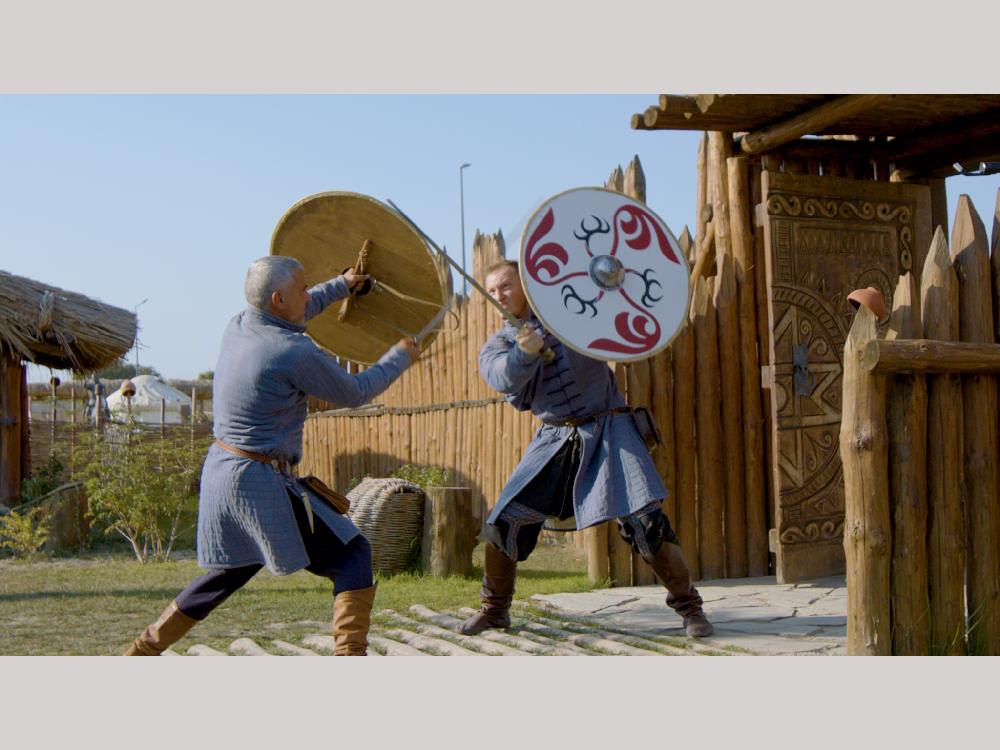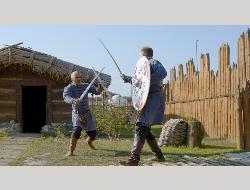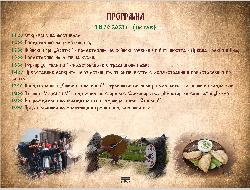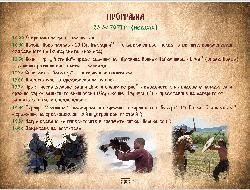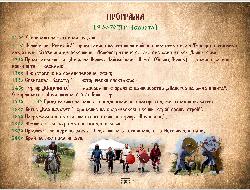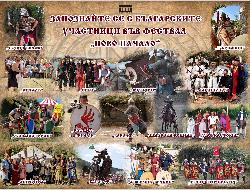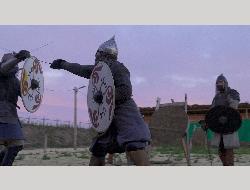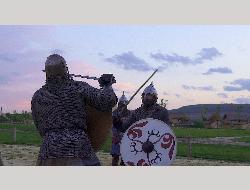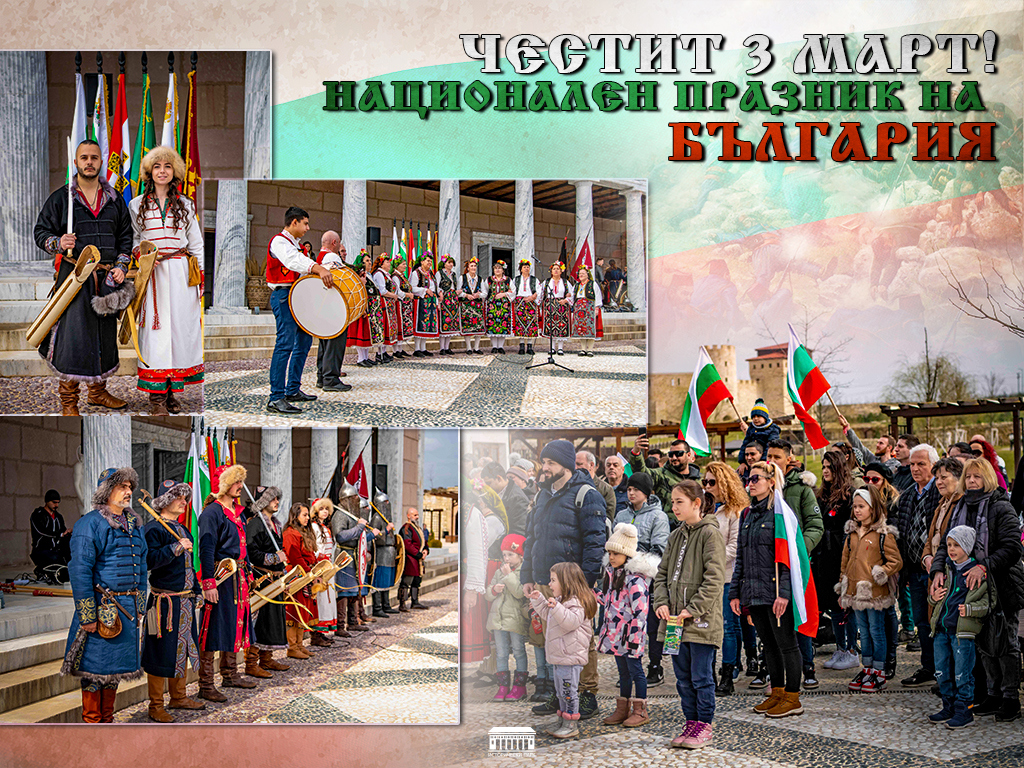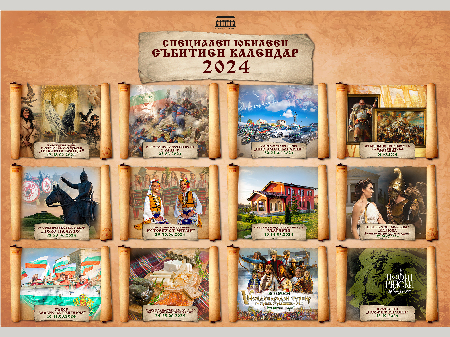More than 280 reconstructors: warriors, craftsmen and artists from Bulgaria, Poland, Hungary, Slovakia, Romania, France and Ireland, will take part in the revival of history during the International Ancient and Medieval Festival "NEW BEGINNING" - 2021.
The medieval combat tournament "Mechenosha" will be held from the 18th to the 20th of June 2021, during the three-day festival program
The Mechenosha Tournament includes:
- duels "Master of the sword and shield" (duels with shield and sword - tap fight);
- duel "Master of the sabre" (duel with a sabre or other one-handed weapon, with fencing masks - housecarl);
- Buhurt duels (shield, sword and full protective equipment fight)
- team battles "Team fight" (combat on the battlefield, 5 against 5).
- team battles "Buhurt" (combat on the battlefield, 3 against 3).
The awarding ceremony of the winners in the tournament will take place from 19:00, on the day of the respective discipline.
- Duel tournament “Master of the Sword and Shield”
The “Master of the Sword and Shield" tournament is defined by the rules of reenactment fencing. The goal is to enable each fighter to demonstrate his skills with a sword and shield in the most enjoyable and safest environment possible.
Rules of the duel
1.1 A judging committee of three marshals and one secretary is ruling the fight.
It has the authority to make decisions, counting the points, calling and disqualifying the fighters that do not follow the rules and the etiquette of a martial arts tournament. All kind of insults, provocations or confrontations of a fighter with his opponent, team or judge committee will lead to disqualifying the fighter from the tournament.
1.2 Every duel consists of three rounds, the fighter that loses two of them is eliminated from the rest of the tournament. The winner continues onto the next stages. If the fighters number is uneven, the last fighter in the brackets goes automatically to the next stage. If there is an uneven number of fighters on the final, every fighter fights against the remaining ones. With an equal number of victories, the fighter who received the fewest blows is declared the winner. If the strikes are equal, the matches are replayed;
1.3 Duration of the fight - every fight consists of three rounds. Every round continues until one of the fighters scores a clear strike in the authorised striking zones. If both fighters score in a less than a second interval, the round is restarted. If one of the fighters disarms or throws his opponent off balance, he scores a point.
1.4 Allowed techniques - all cutting strikes with the blade in the authorised striking zones. Blows with the false edge of swords and the back of sabres in the authorised striking zones. Hits with the flat of the shield in the authorised striking zones. Kicking in the authorised striking zones (kicks and strikes with the flat of the shield are of a tactical nature and do not score points). Wrestling foot sweeps and off balancing. Disarming and holding the opponent’s weapon under the armpit.
1.5 Forbidden techniques – all stabbing and thrusting strikes, strikes with the edge of the shield, grabbing the opponent's weapon with the hands, strikes with the pommel or the cross-guard of the weapon, punches, elbows, knees, head strikes and wrestling on the ground.
1.6 Allowed striking zones – the dome of the helmet, the torso, shoulders and arms above the palms, legs above the ankle.
1.7 Forbidden striking zones – the face, the throat and neck, the groin, the back of the neck, the palms and the feet under the ankle. If a fighter hits a forbidden zone, he receives a warning from the marshals. If the same fighter hits a forbidden zone again he is disqualified from the tournament. A fighter who has injured his opponent due to illegal strike is disqualified from the tournament.
2.Weapons
2.1 Allowed weapons – all replicas or close replicas of medieval swords, sabres, palashes or one handed axes corresponding to the medieval period. The cutting edge must be a minimum of 2.5 mm rounded. All weapon points must be rounded with a diameter of at least 2cm.
2.2 Forbidden weapons: every two handed axe, halberds, all types of maces, morning stars, flails, spears, pikes and saws. Fighters with dirty, rusty weapons or those with visible corrosion or other destruction of the integrity of metal parts are not allowed to participate. Damaged shields and those edged with unnatural materials, uncharacteristic of the Middle Ages. Shields with modern emblems or heraldry. The committee of judges has the right to check the safety of weapons and the rest of the equipment and to exclude fighters who do not follow the safety rules, at their own discretion;
2.3 Personal protective equipment. The minimum protective equipment required to participate in the tournament is: a metal helmet with a minimum thickness of 1.5 mm. Gloves lined with cotton, wool and / or leather or metal. Knee protection (replica of a historical or modern ones hidden under clothing protection), torso armour. The organisers provide chain mail to fighters without one. Fighters without other minimum protective equipment are not allowed in the tournament.
- Tournament “Master of the sabre”
The tournament is defined by the rules of reenactment fencing. The goal is to enable each fighter to demonstrate his skills with a sabre in the most enjoyable and safest environment possible.
Rules of the duel
1.1 A judging committee of three marshals and one secretary is ruling the fight. It has the authority to make decisions, counting the points, calling and disqualifying the fighters that do not follow the rules and the etiquette of a martial arts tournament. All kind of insults, provocations or confrontations of a fighter with his opponent, team or judge committee will lead to disqualifying the fighter from the tournament.
1.2 Every duel consists of three rounds, the fighter that loses two of them is eliminated from the rest of the tournament. The winner continues onto the next stages. If the fighters number is uneven, the last fighter in the brackets goes automatically to the next stage. If there is an uneven number of fighters on the final, every fighter fights against the remaining ones. With an equal number of victories, the fighter who received the fewest blows is declared the winner. If the strikes are equal, the matches are replayed;
1.3 Duration of the fight - every fight consists of three rounds. Every round continues until one of the fighters scores a clear strike in the authorised striking zones. If both fighters score in a less than a second interval, the round is restarted. If one of the fighters disarms or throws his opponent off balance, he scores a point.
1.4 Allowed techniques - all cutting and stabbing strikes with the blade in the authorised striking zones. Blows with the false edge of swords and the back of sabres in the authorised striking zones. Kicking in the authorised striking zones (kicks are of a tactical nature and do not score points). Wrestling foot sweeps and off balancing. Disarming and holding the opponent’s weapon under the armpit.
1.5 Forbidden techniques – grabbing the opponent's weapon with the hands, strikes with the pommel or the cross-guard of the weapon, punches, elbows, knees, head strikes and wrestling on the ground.
1.6 Allowed striking zones – the fencing helmet, the torso, shoulders and arms above the palms, legs above the ankle.
1.7 Forbidden striking zones – the groin, the back of the neck and head, the palms and the feet under the ankle. If a fighter hits a forbidden zone, he receives a warning from the marshals. If the same fighter hits a forbidden zone again he is disqualified from the tournament. A fighter who has injured his opponent due to illegal strike is disqualified from the tournament.
2.Weapons
2.1 Allowed weapons: all replicas of medieval sabres, swords or one handed axes corresponding to the medieval period. The cutting edge must be a minimum of 2.5 mm rounded. All weapon points must be rounded with a diameter of at least 2cm.
2.2 Forbidden weapons: every two handed axe, halberds, all types of maces, morning stars, flails, spears, pikes and saws. Fighters with dirty, rusty weapons or those with visible corrosion or other destruction of the integrity of metal parts are not allowed to participate. The committee of judges has the right to check the safety of weapons and the rest of the equipment and to exclude fighters who do not follow the safety rules, at their own discretion;
2.3 Personal protective equipment. The minimum protective equipment required to participate in the tournament is: a fencing mask. Gloves lined with cotton, wool and / or leather or metal. Knee protection (replica of a historical or modern ones hidden under clothing protection), torso armour. The organisers provide fencing masks to fighters without one. Fighters without other minimum protective equipment are not allowed in the tournament.
Every visitor will have the opportunity to witness this uplifting event!
Be a part of it!
June 18-20, 2021,
Historical Park, village of Neofit Rilski
Municipality of Vetrino, Varna region
